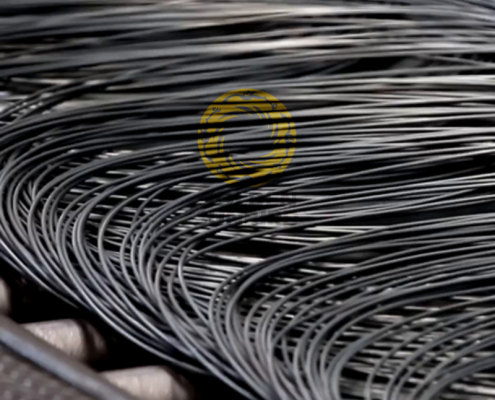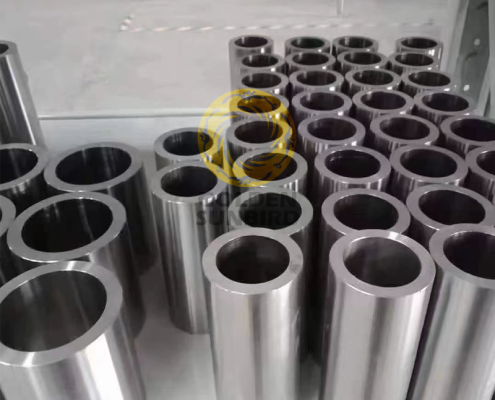Golden Sunbird Metals is a leading supplier of Tantalum alloys and pure Tantalum (Ta) in China, we offer a comprehensive selection of tantalum-based materials known for their exceptional resistance to corrosion and high-temperature performance. Ideal for electronics, chemical processing equipment, aerospace components, medical devices, nuclear power, automotive, and optical applications, owing to their high melting point, corrosion resistance, and thermal conductivity, our Tantalum alloys promise to elevate your project’s standards. If you want to buy bulk Tantalum alloys or custom Tantalum alloy products, please don’t hesitate to contact [email protected].
FAQS
What Are Tantalum Alloys?
Tantalum alloys are advanced materials that incorporate tantalum, a rare, hard, blue-gray, lustrous transition metal, with other metals to enhance its natural properties. These alloys are renowned for their extreme resistance to corrosion, high melting points, and ability to conduct electricity and heat, making them invaluable in various high-tech, chemical, and aerospace applications.
- Most important information:
- Tantalum alloys are combinations of tantalum with other metals.
- They are known for their corrosion resistance, high melting points, and conductivity.
- Used extensively in high-tech, chemical, and aerospace industries.
Why Are Tantalum Alloys Used in Electronics?
Tantalum alloys are widely used in electronics due to their excellent electrical conductivity and ability to form thin, highly effective oxide layers that serve as insulating barriers. These characteristics make them ideal for use in capacitors and high-end electronic devices, where stable performance under extreme conditions is essential.
- Most important information:
- Excellent electrical conductivity.
- Ability to form effective insulating oxide layers.
- Stability under extreme conditions makes them ideal for capacitors and high-end electronics.
How Are Tantalum Alloys Manufactured?
The manufacturing of tantalum alloys typically involves powder metallurgy or vacuum arc melting processes. Powder metallurgy allows for precise control over the alloy’s composition and microstructure, while vacuum arc melting ensures the removal of impurities and the production of a uniform alloy. These methods contribute to the high quality and reliability of tantalum alloys used in demanding applications.
- Most important information:
- Utilize powder metallurgy or vacuum arc melting processes.
- Powder metallurgy provides precise control over composition.
- Vacuum arc melting ensures purity and uniformity of the alloy.
What Are the Main Applications of Tantalum Alloys?
Tantalum alloys have a wide range of applications due to their unique properties. They are extensively used in the aerospace industry for manufacturing jet engine components, in the chemical industry for making corrosion-resistant equipment, and in the medical field for producing surgical instruments and implants. Their exceptional durability and resistance to chemical attack make them suitable for these critical applications.
- Most important information:
- Used in aerospace, chemical, and medical industries.
- Ideal for manufacturing jet engine components and corrosion-resistant equipment.
- Used in producing surgical instruments and implants.
How Do Tantalum Alloys Compare to Other High-Temperature Materials?
antalum alloys stand out among high-temperature materials due to their exceptional corrosion resistance, especially in acidic environments, and their ability to remain stable at temperatures where many other materials would degrade. While materials like nickel and titanium alloys also offer high-temperature resistance, tantalum alloys often exceed these in terms of chemical stability and resistance to erosion and corrosion. This makes them particularly valuable in chemical processing and environments where reliability under extreme conditions is paramount.
- Most important information:
- Exceptional corrosion resistance in acidic environments.
- Stability at high temperatures where other materials degrade.
- Superior in chemical stability and resistance to erosion compared to nickel and titanium alloys.
Can Tantalum Alloys Be Recycled?
Yes, tantalum alloys can be recycled, and recycling is a critical aspect of their lifecycle due to the rarity and cost of tantalum. The recycling process involves collecting scrap tantalum from various sources, including industrial waste and obsolete equipment, and then refining and purifying it to be reused in new products. Recycling not only conserves tantalum resources but also reduces environmental impact and the cost of products made from these alloys.
- Most important information:
- Tantalum alloys can be recycled.
- Involves collecting scrap and refining it for reuse.
- Conserves resources, reduces environmental impact, and lowers costs.
What Environmental Impact Do Tantalum Alloys Have?
The environmental impact of tantalum alloys is primarily related to the mining of tantalum ore and the energy-intensive processes required to extract and refine tantalum. Mining operations can lead to habitat destruction and pollution if not managed responsibly. However, the durability and recyclability of tantalum alloys mitigate their environmental footprint over their lifecycle. Efforts are ongoing to improve mining practices and increase recycling rates to further reduce the environmental impact.
- Most important information:
- Impact related to mining of tantalum ore and energy-intensive refining processes.
- Potential for habitat destruction and pollution from mining.
- Durability and recyclability mitigate environmental footprint, with efforts to improve practices and increase recycling.







